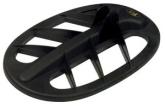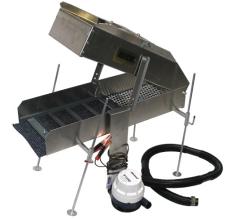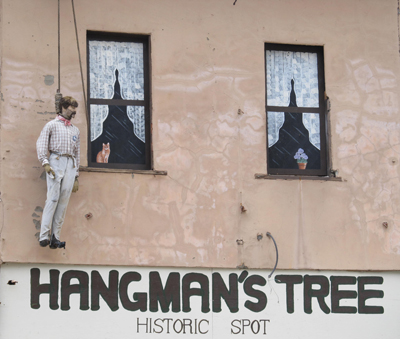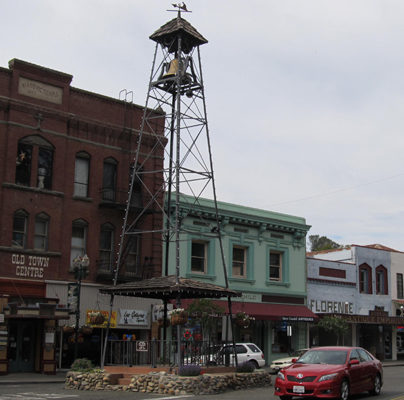Sunday, June 24 2012
The words "concentric" and "DD" (or "double-D") refer to the type of your metal detector's internal coil construction. Most searchcoils (whether round or elliptical) are of concentric construction. A concentric searchcoil has a large transmitter coil, and a smaller receiver coil in the center, usually in the same plane. This coil arrangement is relatively easy to manufacture and its symmetry helps to minimize electrical drift due to time and temperature. It also provides good discrimination on shallow targets.
 Some searchcoils (whether round or elliptical) are of DD construction. Double-D's comprise two overlapping D-shaped coils of approximately the same size, one being the transmitter and the other the receiver. The advantages of the DD are greater depth in mineralized soil, a broad sweep pattern, and narrower target response. Its primary disadvantages from a user's point of view are multiple responses on shallow targets and poor discrimination of flat iron objects. Designing and manufacturing them is more difficult because their lack of radial symmetry makes them prone to drift which the design and the manufacturing process must minimize. Manufacturing cost is higher because the coils cannot be wound on high-speed winding equipment. Some searchcoils (whether round or elliptical) are of DD construction. Double-D's comprise two overlapping D-shaped coils of approximately the same size, one being the transmitter and the other the receiver. The advantages of the DD are greater depth in mineralized soil, a broad sweep pattern, and narrower target response. Its primary disadvantages from a user's point of view are multiple responses on shallow targets and poor discrimination of flat iron objects. Designing and manufacturing them is more difficult because their lack of radial symmetry makes them prone to drift which the design and the manufacturing process must minimize. Manufacturing cost is higher because the coils cannot be wound on high-speed winding equipment.Double-D's are usually preferred for relic hunting and gold prospecting. Concentrics are usually preferred when searching for modern coins in an area where there is also iron and aluminum trash. Read more about searchcoils here... Friday, June 01 2012
A highbanker is basically a sluice box with mobility and added height. It is mounted on a 4-legged stand that gives the sluice box the correct slope. Instead of being put right in the creek like a sluice, an engine with a water pump and some hoses transports the water up from the stream into the highbanker. Highbankers are also called power sluices. It is a self-contained unit with many uses— prospecting, sampling, and concentrate clean up.
In general, a highbanker or power sluice is  extremely efficient at trapping gold, including very fine or "flour" gold. The biggest benefit of having this piece of gold prospecting equipment is the ability to process gold-bearing gravels located a distance away from a water source— in other words, you get to bring the water to the gravel, not the gravel to the water! You can purchase a highbanker with a pump/motor and all hoses and fittings included, or you can buy those items separately. extremely efficient at trapping gold, including very fine or "flour" gold. The biggest benefit of having this piece of gold prospecting equipment is the ability to process gold-bearing gravels located a distance away from a water source— in other words, you get to bring the water to the gravel, not the gravel to the water! You can purchase a highbanker with a pump/motor and all hoses and fittings included, or you can buy those items separately.To run a highbanker, you need a system to pump water to it. Highbanker pumps can be either electric (12 volt battery) or gas driven. Some highbankers are also designed and constructed to re-circulate water so they can be employed in situations where little water is available. Keep in mind that the pumps deliver less water as your equipment location is moved uphill. Pumping uphill increases the resistance on the pump, and as you move uphill, eventually there is a point where the pump will not provide sufficient water to run the high banker. The slope on the highbanker usually ranges from about three to four inches per foot. Article continued here... Tuesday, May 15 2012
Following the discovery of gold in Coloma, California on January 24, 1848, boomtowns sprang up quicker than weeds. Just eight miles away, Old Dry Diggins was one such tent-filled mining camp that took root. So named because miners had to move cartloads of dry soil to running water in order to separate out the gold, the population quickly swelled from hundreds of gold seekers to thousands.
 As to be expected, things got a little lawless and wild, and the name changed to Hangtown after numerous hangings took place in quick succession. Today, we know this historic gold rush town as Placerville, which has been the El Dorado county seat for the last 155 years.  Over the years, Placerville has lost many of its old buildings due to fire and demolition, but some landmarks, such as its bell tower, still exist. It was once used as a warning bell for fire and is located in downtown Placerville  . .Wednesday, May 02 2012
Place your sluicebox in the flow of a stream or river so that the water enters the flared end and flows through the sluice. If the current is strong you may need to lay some stones against the edge of the sluice to keep it from washing away. The sluice should be set at a downhill angle that allows the material to briskly flow through it. The higher the volume of water available, the shallower the angle will be. Monday, April 02 2012
Placer gold is any gold that has been freed from solid rock by weathering. There are several types of placer gold, including Eluvial (gold that has been pulled down hill through the force of gravity), Alluvial (running water has deposited the gold in streams and rivers), and Beach (gold is concentrated by wave action). Eolian placers form by wind action in arid regions. Material broken from the bedrock disintegrates and the winds carry away the surface sand and dust, leaving behind a layer of cement-like mixtures of quartz, schist, and other material. Gold, being heavy, settles in this sun-baked "pavement." For the most part, eolian placer gold can be found just about anywhere in a desert landscape. Look for obvious signs of wind erosion and soil depletion, or a flat area on a wind-blown hillside where vegetation grows. If seeds were trapped in a depression, perhaps gold was, too. Desert miners have learned from experience that since wind has carried away most of the lighter sand and topsoil, eolian gold is usually very close to the surface or even on the surface. You can sometimes spot shiny flakes and tiny pickers practically laying on top of the ground, or a metal detector will find anything that is hidden just below the surface.
Friday, March 02 2012
Ever wonder how much gold has been mined in all the world? The best estimate at the end of 2011 is that around 165,000 metric tons (or tonnes) have been mined in all of human history. That’s about 181,881 ordinary tons or 363,762,732 pounds, or 5,820,203,717 ordinary ounces. Gold typically is measured in troy ounces, which are a little bigger than ordinary ounces (a troy ounce is 31.1034768 grams whereas an ordinary ounce is 28.3495231 grams). There are 32.1507466 troy ounces in a kilogram or 32,150.7466 troy ounces in a metric ton. Thursday, February 02 2012
What's the Difference Between a Karat, Carat, and Carrot?
The purity of gold is measured in 24ths called karats. 24K gold or 24-karat is 100% pure gold. 18K gold or 18-karat is 75% pure, and 14K or 14-karat is 58.3% pure. The value of gold can further be determined by its rarity of structure-- whether it is a nugget or wire gold or has specimen value. Gemstones are weighed by the carat (notice the difference in spelling) -- which is 200 milligrams or one-fifth of a gram. There are 5 carats in a gram. In addition to weight, the value of gemstones is also set and judged on their color, clarity, and cut. If you're hungry, choose a carrot! Tuesday, January 03 2012
Whether you've been detecting for years or are considering the purchase of your first detector, you want to be as comfortable as possible, for as long as possible, when you're out in the field swinging. No matter the brand or model you are using, detector ergonomics comes down to three things: how your hand grips the detector, the weight and balance of the detector, and the ability to adjust the handle length. A machine with excellent ergonomic design means less strain on your wrist, arm, shoulder, and back.
• There are two types of handle designs used by detector manufactures: the “L” shaped handle and “S” shape. Most detectorists find that the “L” shaped handle helps to reduce the load on the wrist when you swing the search coil. In contrast, gripping the “S” shaped handle tips your hand slightly downward. This slight downward tilt of the hand could put an unnatural strain on your wrist and forearm, and over time could extend to your shoulder. It's really a matter of personal preference and comfort, so just be aware of the two handle designs and which might work the best for you. • The second ergonomic issue is the weight of the detector and how the weight is distributed on the detector’s handle when batteries are in place. A well balanced detector will have equal weight before and after the grip, which is the best possible situation for swinging the search coil for a long period of time. For the “L” shaped handle, the electronics are placed directly above the hand grip, and usually the batteries are placed under the forearm for added balance to the overall assembly. This brings the balance point very close to the hand grip, but still slightly forward of the grip point, which is ideal. • The ability to adjust the lower handle to the correct length for good upright posture while swinging the search coil cannot be over-emphasized. This adjustment will reduce strain on your shoulder and back. Improper adjustment can cause you to bend over while swinging the coil and may result in lower back pain. Ouch! Other ergonomic issues to consider for maximum comfort and enjoyment while detecting is the audio controls. The audio output should be stereo and the volume control should cover a wide range so when you hear a signal, you can discern what the target is made of. Also, if your detector has an LCD display, the display information should be large and readable, even in bright sunlight. Several top metal detector manufacturers such as Garrett, Fisher and Tesoro have perfected the modern art of metal detecting. With each new machine that comes to market, the features and success rate just keeps getting better. Learn more about metal detecting here. Wednesday, October 05 2011
Did you see the article we wrote for the Sept/Oct 2011 issue of Gold Prospectors magazine about Idaho's Silver Valley? If you're a member and get the magazine, check out pages 20-26. The Silver Valley is packed with fun family activities such as underground mine tours, mining museums, and you can also camp, hike, bike ride, ski, hunt for star garnets, prospect, and even visit the oldest standing building in the state of Idaho— the Sacred Heart Mission located in nearby Cataldo. If you're not a member of GPAA and don't get the magazine, download a .pdf of the article here to learn more about the Silver Valley's 120 years of mining history. Saturday, September 10 2011
|
|
Nugget of News Blog |





